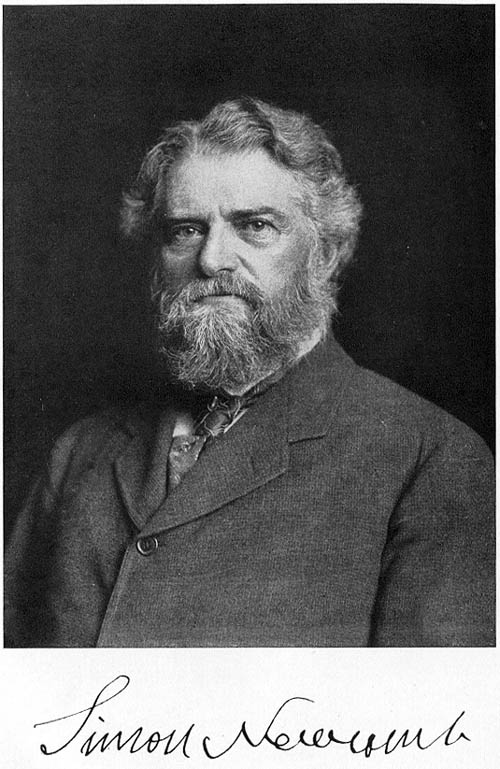Simon Newcomb & Galaxies
Today, beyond the Milky Way. The University of Houston's College of Engineering presents this series about the machines that make our civilization run, and the people whose ingenuity created them.
The year is 1902: America's leading astronomer, Simon Newcomb, asks us to imagine leaving Earth and traveling outward at the speed of light for a hundred thousand years. Once we've made this impossible voyage, what do we see? Only inky black emptiness! But, when we turn around, we see a large fuzzy cloud of light.
The home we left, our galaxy, is the whole of the Milky Way. Newcomb's universe is infinite empty space occupied only by that enormous cloud of stars. Although he doesn't use the word galaxy, it's been in our language for a long time. It was another word for the Milky Way. Chaucer uses the word galaxy. And Milton wrote:
... Seen in the Galaxy, that milky way
Which nightly as a circling zone thou seest
Powder'd with stars.
Newcomb, who lived from 1835 until 1909, knew that there were other galaxies. But, he died just as we were beginning to comprehend how vast that sea of island universes really is.
As a boy, Newcomb escaped to the United States from a slavish apprenticeship in Nova Scotia. He was self-educated -- worked for a while as a schoolteacher, then as a computer at the Nautical Almanac Office in Cambridge, Massachusetts. The word computer then meant a human drudge, not a machine. Still, he was a very talented drudge. He got into Harvard, and earned a degree within a year.
By the time he wrote his popular description of the universe, he was the panjandrum of American astronomy. He'd reshaped the mathematics of planetary orbits, run the Nautical Almanac Office, and was now collecting honorary doctorates from all over the world.
But that world was shifting under his feet. In his elder statesman role, he scored some hits and some misses. He wrote an article proving that human flight was not possible. That's a grim reminder not to confuse what we actually do know with what we only suspect to be true.
His work on anomalies in Mercury's orbit was another matter. His was the last word on that problem before Einstein and relativity would explain the real reason for Mercury's erratic path. But this time Newcomb defined his own ignorance and he laid his doubts before us.
Others blamed unseen planets near the sun for influencing Mercury. Newcomb knew that had to be nonsense. He said it must be a gravitational anomaly, but what kind of anomaly? Six years after Newcomb died, Einstein realized that it really was gravity. But it was gravity acting upon the light passing around Mercury. Mercury's path only appeared to be erratic.
So much change since then: Now, when the starship goes into hyperdrive, we expect galaxies to whip by it. We expect a night powdered, not with stars, but with galaxies. Newcomb knew they were there, but our perceptions are now in hyperdrive. Now we look at our Milky Way, with its billions of stars -- and it is small.
I'm John Lienhard, at the University of Houston, where we're interested in the way inventive minds work.
S, Newcomb, Astronomy for Everybody. (New York: McClure, Phillips & Co., 1903/1902).
M. Benjamin, Simon Newcomb: Astronomer. Leading American Men of Science, New York: Henry Holt and Company, 1910, pp. 363-389.
B. G. Marsden, Newcomb, Simon. Dictionary of Scientific Biography (C.C. Gilespie, ed.) Vol. X, (New York: Charles Scribner's Sons, 1974).

Frontispiece of his book Astronomy for Everybody.

John Herschel's early 19th-C drawing of the Milky Way (from O. M. Mitchell, The Orbs of Heaven: Planetary and Stellar Worlds. (London: George Routledge and Sons, 1892/1851).